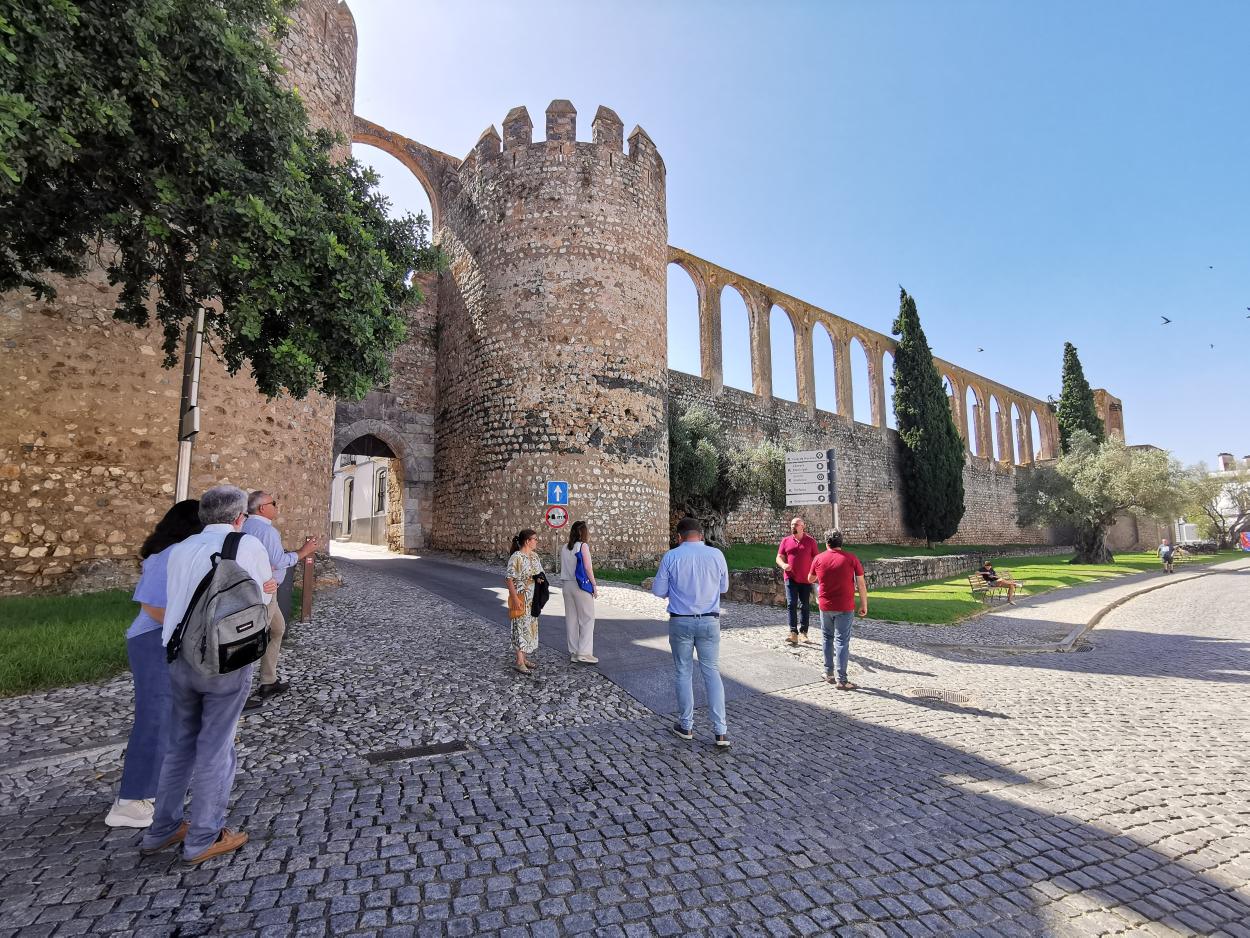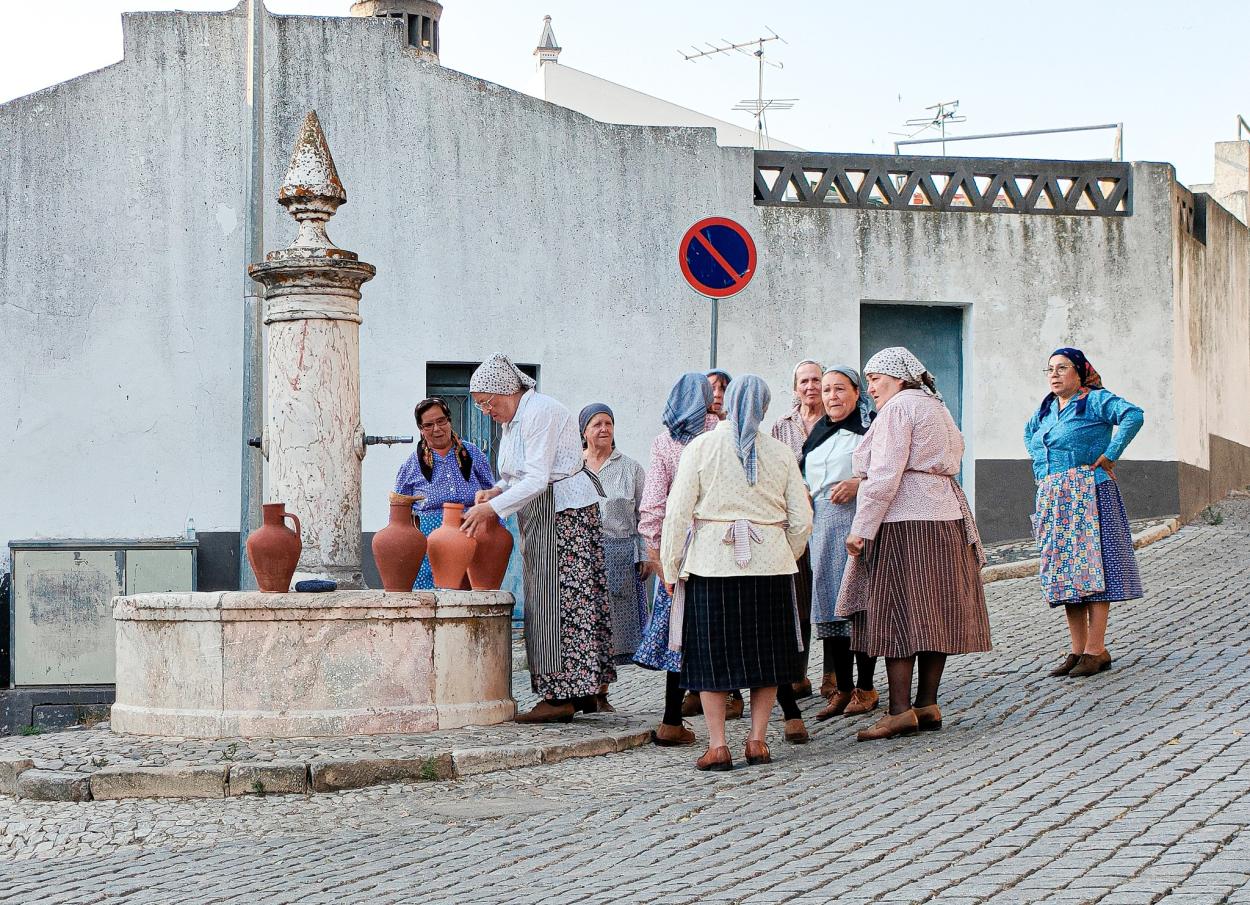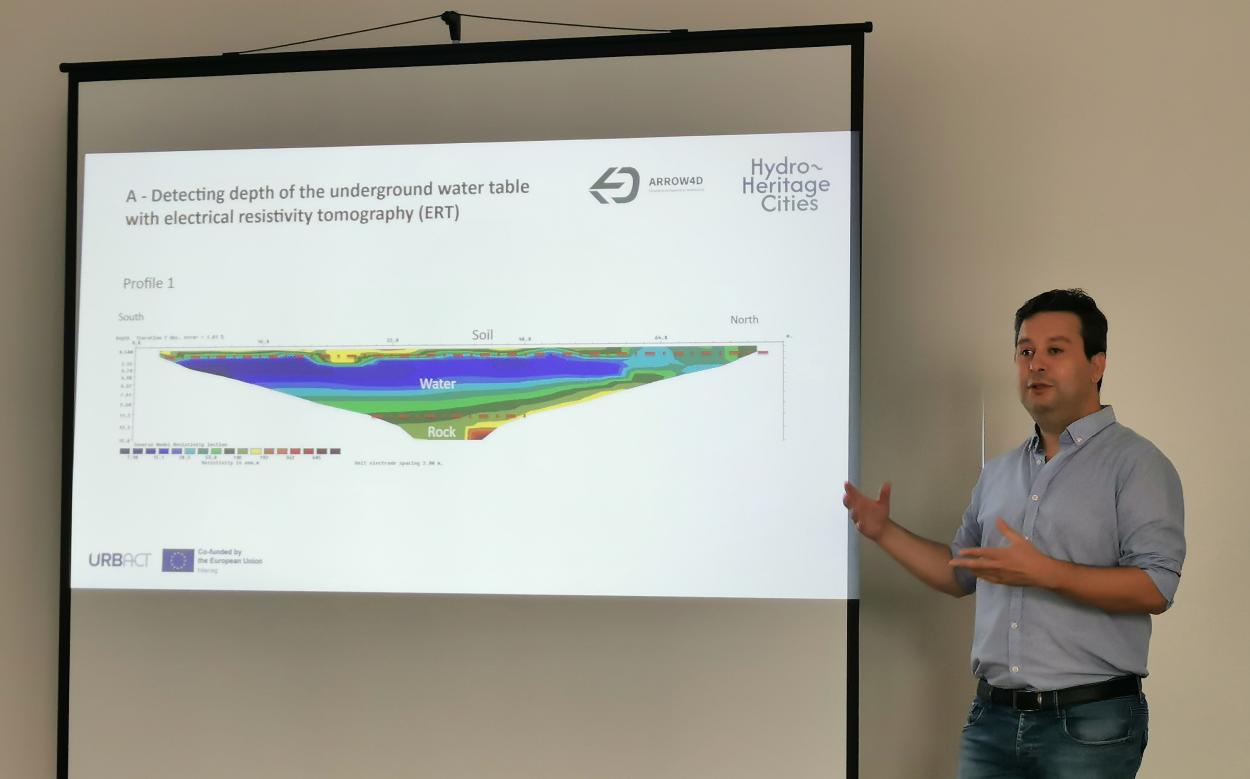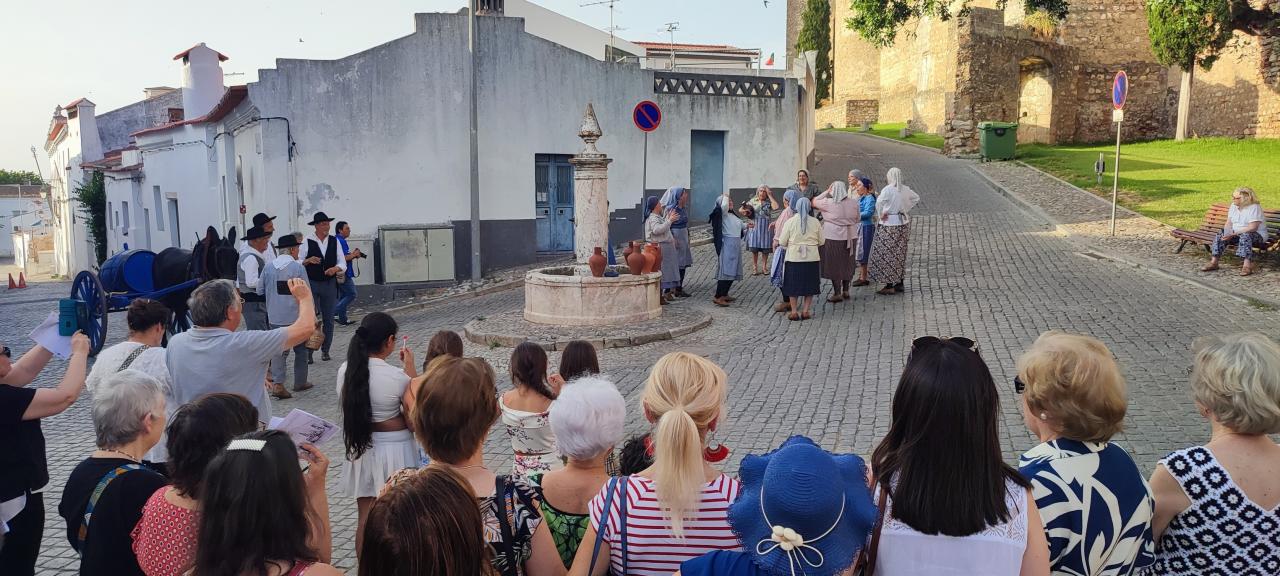As the bus, which carried the Hydro-Heritage Cities partners to the airport, was leaving the city of Serpa last Saturday, we couldn’t stop stretching our neck for a last glimpse of the iconic ‘Nora’; a 17th century water complex of an elevated waterwheel and aqueduct that overshadows the low sun-reflecting white houses of the town.

Besides a very productive and inspiring Network meeting, next to the joys and warm hospitality of the people of Serpa, we left our partners there convinced once more for the potential of past historical buildings and water related technical achievements to be innovative urban and social regenerators.
The weeks before we arrived in Serpa the municipality, in the frame of its (Hydro-Heritage Cities’ Network) Action Plan, ran a geophysical study and photogrammatic survey of the “Nora” while it re-enacted past times, when going to the fountain to fetch water in jars served as a moment of daily (particular female) socializing.

This street entertainment initiative, called “Conversations at the Fountain”, took place on June 16th as part of the Cultural Week of Serpa’s Senior Academy. The later is an active URBACT Local Group member and this activity was also part of its Heritage and Archaeology workshop. The event, through small real or imagined dialogues, recreated the atmosphere of early 20th c. when public fountains acted as an everyday meeting point for Serpa’s inhabitants. It showcased the historical interweaving of water infrastructure and social culture in Serpa’s (and not only) everyday life until not long ago, but nowadays almost forgotten.
While this cultural event offered a moment of relaxation and enjoyment, by reviving the local memory and identity it promoted awareness on the possibility of sustainable water use today. During the activity, a questionnaire was distributed to the public, calling them to assess the importance of rehabilitating the “Nora” and the aqueduct, and their views on how to do so.
The event was the first testing action of the City of Serpa in its effort to valorize its hydraulic heritage and develop a study for the requalification of the “Nora” (waterwheel) and the adjusted to it Aqueduct.

To this aim, Serpa has assigned the private company Arrow4d for a geophysical study and photogrammatic survey of the “Nora”, in order to provide the technical data that will inform the Municipality’s investment plan for restoring the Nora and the Aqueduct (as a functional site). The work carried out included geophysical prospecting to detect the “Nora’s” water table and photogrammetry that produced technical drawings of the latter’s subterranean structures.
Appreciating past community and social functions of Serpa’s Hydro-Heritage and deploying state of art geophysics, manifests how past culture and hi-tech tools can weave innovative ways to both restore and reintegrate the city’s hydro-heritage sites in the city life, responding to current needs and aspirations.

